Recent Articles
Popular Makes
Body Types
2017 Honda CR-V Road Test and Review
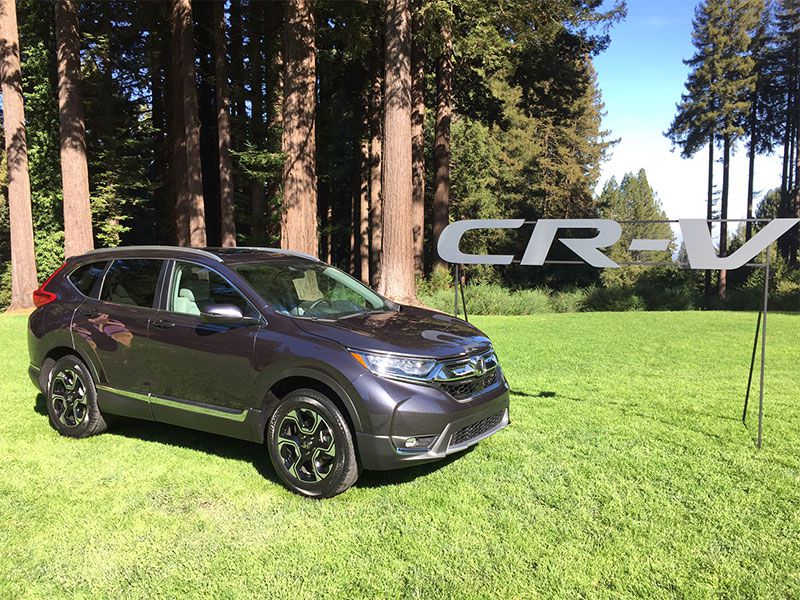
2017 Honda CR V stage by Andy Bornhop ・ Photo by Andy Bornhop
Honda sold 800,000 vehicles in the U.S. in 1997, and 13 percent of them were light trucks (CR-Vs and Isuzu-built Passports). Now, in 2016, Honda expects to sell 1.6 million vehicles. But get this—some 48 percent of Honda’s current sales are now light trucks, vehicles such as the Pilot, HR-V, Odyssey, and Ridgeline. And leading the way, as usual, is the super popular Honda CR-V, the best-selling SUV in the U.S. for the last two decades.
Naturally, this compact sport ute is hugely important to Honda, so it’s easy to understand why the company has aimed for “class-above” standards when creating the 5th-generation CR-V. Although this all-new 2017 Honda CR-V doesn’t go on sale until December 21, Autobytel had an early opportunity to test one recently in California, on the coastal roads above Monterey. Here’s what we learned.
It's Bigger
In overall length, the 2017 Honda CR-V, at 180.6 inches, is 1.2 in. longer than the outgoing model. More significant is its 1.6-in.-longer wheelbase, which translates to 2.1 more inches of rear leg room—and the most leg room you’ll find in the compact SUV class. Similarly, the new CR-V is also 1.4 inches wider, and its track (the distance between left- and right-side wheels) is up by 0.7 inches in front and 1.3 inches in the rear. In height, the new 2017 CR-V is a bit taller than before, but the 1.4-inch increase means this Honda still fits with ease in almost any garage.
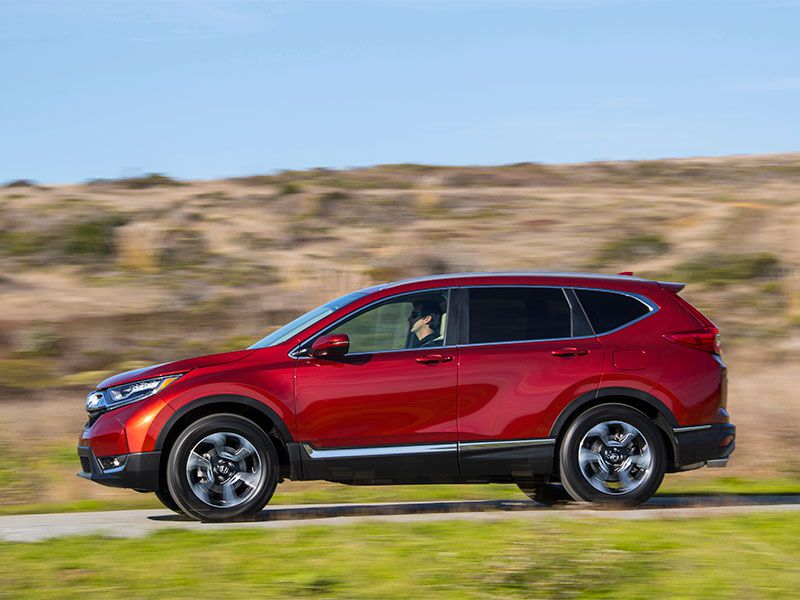
Photo by Honda
It's Roomier
No surprise, the bump in dimensions translates to 1.8 more cubic feet of interior room. The new 2017 Honda CR-V, in fact, feels almost as spacious inside as an original Pilot. There’s plenty of head room for taller people, and when the driver’s seat is adjusted all the way back for a 6-foot-4 driver, that same person can climb into the back seat directly behind and fit comfortably. When that same person (yours truly) tries this in a 2016 CR-V, his knees touch the front seatback. As in the previous CR-V, three can fit across the rear bench, but it’s comfortable only if the center occupant is a kid. Also worth noting: When the split 60/40 rear seat is folded flat (an easy single-step process), the load floor is perfectly flat and the total available cargo length has grown by a whopping 9.8 inches.
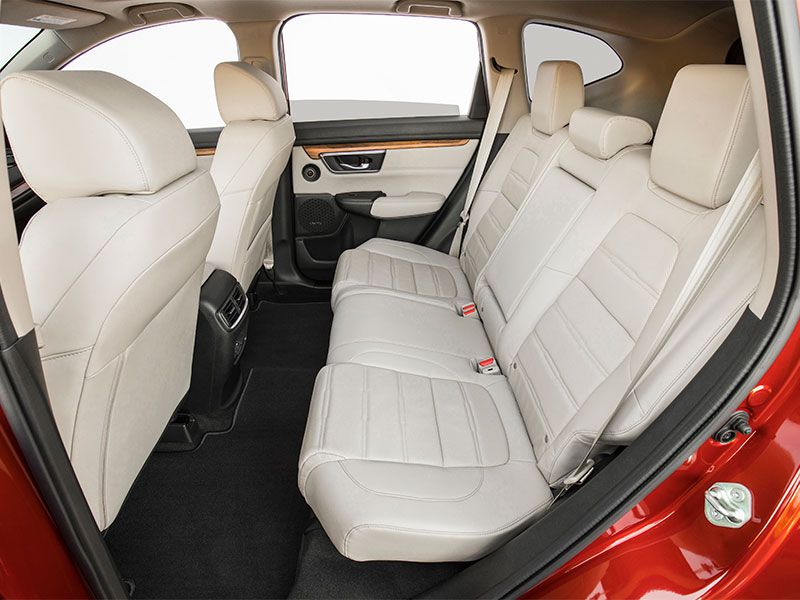
Photo by Honda
It's More Powerful
Although the new Honda CR-V is available as an LX model with a carryover engine—a naturally aspirated 2.4-liter 4-cylinder with 180 horsepower—the big news for 2017 is the debut of new turbocharged 1.5-liter 4-cylinder powerplant (EX, EX-L, Touring) that makes 190 hp at 5600 rpm and 179 lb.-ft. of torque from 2000 to 5000 RPM. This direct-injected engine feels totally at home in the new CR-V, thanks to a broad swath of torque provided by a responsive turbocharger that supplies 18.5 PSI of intercooled peak boost. This low-friction 16-valver, which doesn’t require premium-grade fuel, mates exclusively to a continuously variable transmission; a manual gearbox is not available. The turbo 1.5, it’s worth noting, is closely related to that in the new Civic, but added boost and a less-restrictive intake create added power for the CR-V, which ranges in weight from roughly 3300 lb. (front-wheel drive models) to 3500 lb. (all-wheel drive models).
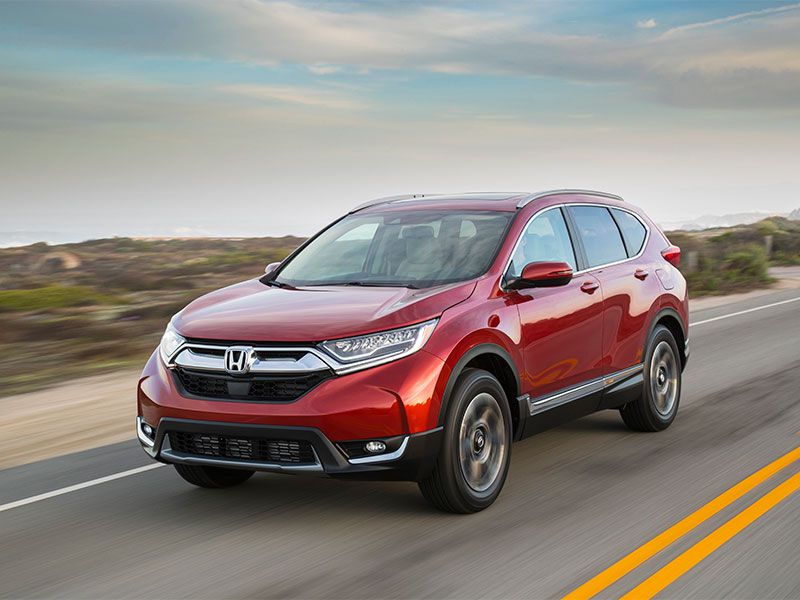
Photo by Honda
It's More Fuel Efficient
It’s unusual for the most powerful version of a vehicle to be the most efficient, but that’s the case with the 2017 Honda CR-V. The front-wheel drive CR-V, the one powered by the 190-horsepower 1.5-liter turbo, is rated by the EPA at 28 MPG city/34 MPG highway/30 MPG combined. Honda says that’s best in class for a non-hybrid compact SUV. All-wheel drive CR-Vs with the turbo 1.5 are not quite as thrifty but still pretty good, rated by the EPA at 27/33/29.
If you’d rather have a CR-V LX with the naturally aspirated 2.4-liter engine, it also makes good use of a gallon of gasoline. Front-wheel drive LXs are rated by the EPA at a quite respectable 26/32/28, which drops to 25/31/27 when all-wheel drive is ordered.
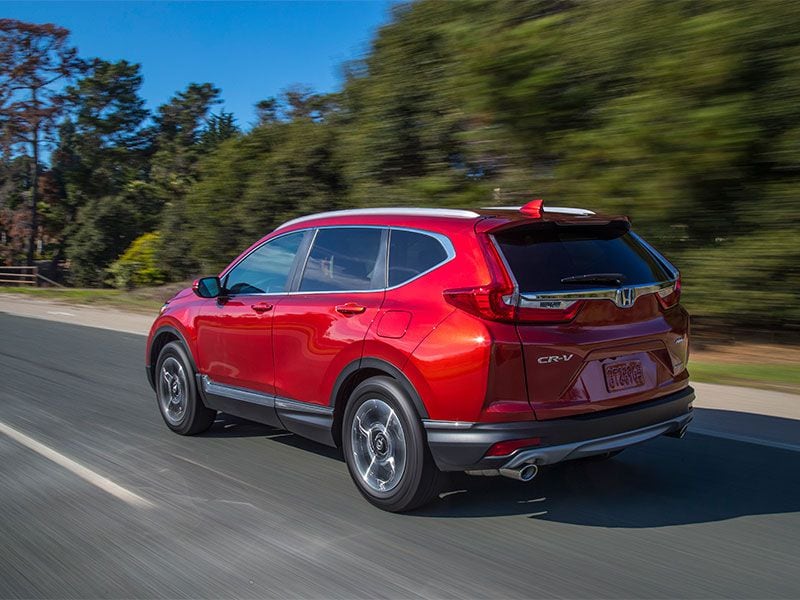
Photo by Honda
It's Safer
Traditional safety hardware abounds in the new 2017 Honda CR-V, beginning with an energy-absorbing chassis fortified by electronic stability control, anti-whiplash seats, advanced front airbags, side curtain protection, and even a standard rearview camera.
But if you order a CR-V EX, EX-L, or Touring model, Honda Sensing is standard. This comprehensive suite of semi-autonomous driving technologies includes a collision mitigation braking system and forward collision warning, plus lane keeping assist, road departure mitigation, lane departure warning, and adaptive cruise control with low speed follow. And not just that: These CR-Vs also boast a driver attention monitor (which senses when the driver might be sleepy) and a blind spot information system.
Thanks to technologies like these, the 2017 Honda CR-V is expected to receive a 5-Star Overall Vehicle Score from the NHTSA and a Top Safety Pick+ rating from the Insurance Institute for Highway Safety.
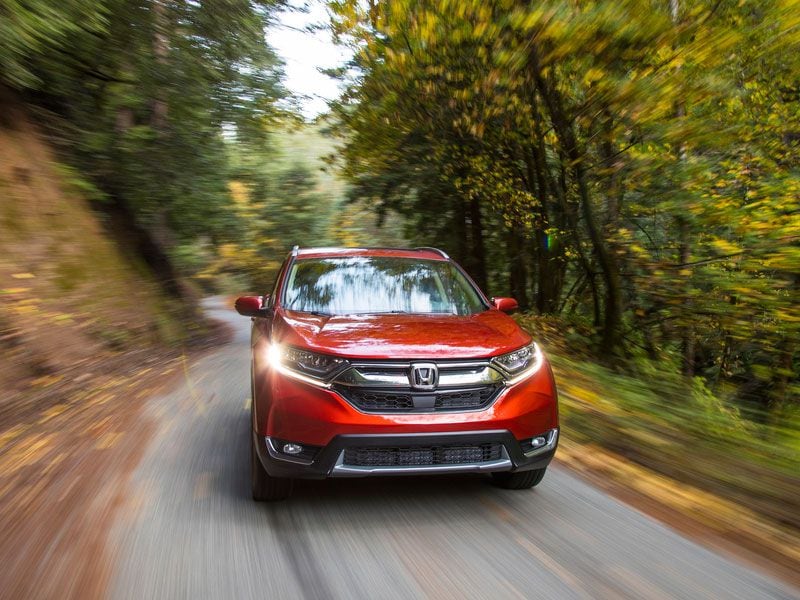
Photo by Honda
It's Handsome Inside
In short, the new CR-V interior is a pleasant place. Two reasons: 1) It’s open and airy, far more comfortable than before, and 2) it’s a big step up in design and in quality of materials, many of the soft-touch variety. What’s more, the 2017 Honda CR-V is remarkably quiet inside, thanks to better door sealing, lots of sound-deadening materials, and active noise cancellation.
We like the big 7-inch navigation screen of the Touring model (it’s a 5-in. screen on the LX), and how the digital speedometer is easily seen right below the bar-graph tachometer (with its 6500-rpm redline). Also, because the 2017 Honda CR-V now has an electronic parking brake, space on the center console has been freed up for storage of cell phones and like. Two other positives: Two USB charge ports now adorn the back of the center console, and hallelujah, Honda has switched back to a traditional volume knob for the CR-V’s stereo.
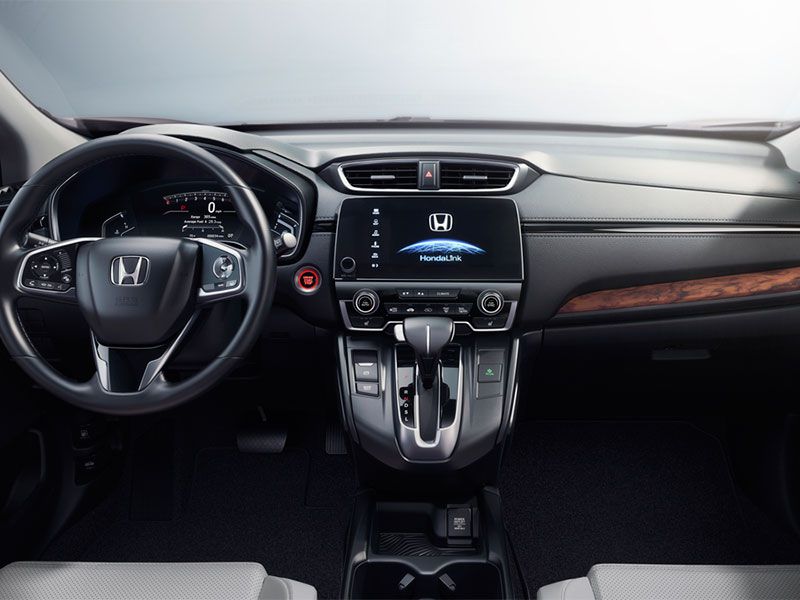
Photo by Honda
It's Connected
Worried about staying connected in your new CR-V? No need to be, particularly in the EX and higher models, which are equipped with a high-definition 7-inch touchscreen that supports Apple CarPlay and Android Auto. Other infotainment in the 2017 Honda CR-V is provided by the HondaLink connected car system, as well as high-definition radio and HondaLink Assist (an emergency aid that requires a compatible phone). Honda’s navigation system has voice recognition and digital traffic, plus a Pandora interface, SMS text messaging, a USB audio port, and the latest version (2.0) of SiriusXM radio.
The base version of the new Honda CR-V, the LX, makes do with a 5-inch touchscreen that allows the likes of Pandora to be played either through a USB port or wirelessly via Bluetooth.
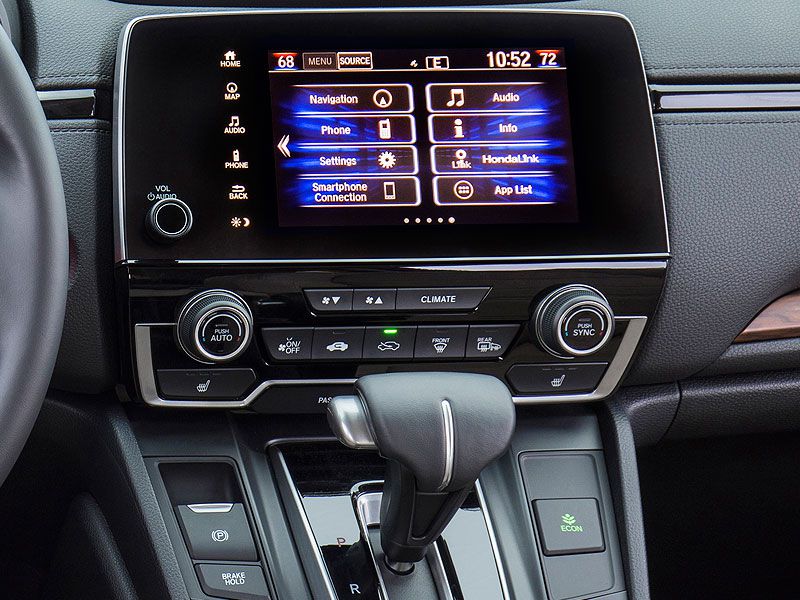
Photo by Honda
Four Models, Four Prices
LX, $24,045: This entry-level Honda CR-V, expected to be about 25 percent of the mix, has the 2.4-liter engine, 17-in. alloy wheels, LED taillights and turn signals, and a capless fuel filler.
EX, $26,695: This volume leader, about 30 percent of the CR-V mix, has the 1.5-liter turbo engine, 18-in. alloy wheels, push-button start, full-color TFT instruments, a 7-inch main display, rear USB ports, a power moonroof, and all the HondaSensing driver-assist technologies.
EX-L, $29,195: This CR-V, about 20 percent of the mix, is an EX with leather-trimmed seats, a powered and programmable tailgate, a 4-way power driver's seat with memory, and SiriusXM radio.
Touring, $32,395: This CR-V flagship, about 15 percent of the mix, is an EX-L with unique 18-in. alloy wheels, LED headlights, roof rails, finished dual exhausts, a hands-free tailgate, and a 330-watt stereo with nine speakers.
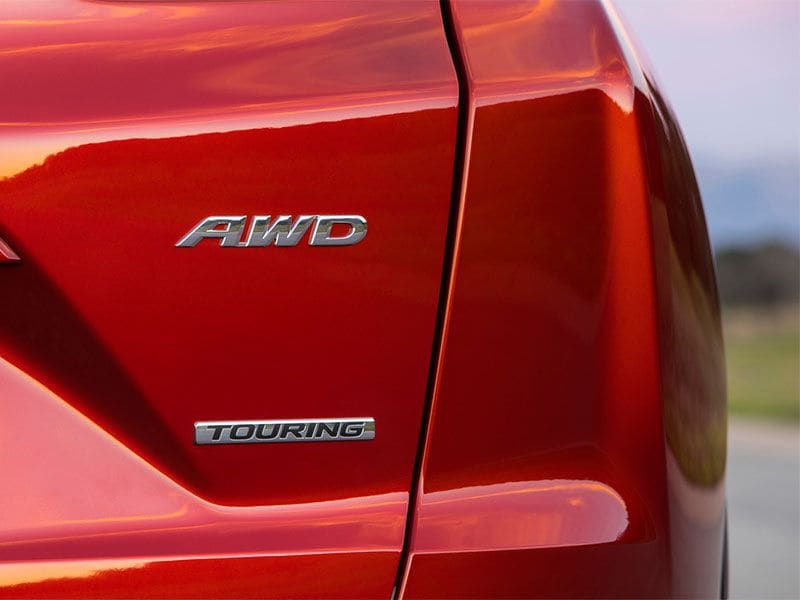
Photo by Honda
What's it like to drive?
The chief engineer of the new 2017 Honda CR-V, Takaaki Nagadome, worked on the original Acura NSX supercar. Does this mean the new CR-V is the NSX of compact SUVs? No. But this new Honda SUV does work remarkably well on a twisty road, and, as with the NSX, its agility doesn’t come at the expense of good ride quality.
Moreover, this Honda SUV is comfortable and quiet, which makes it an ally in the daily grind, aided by that spacious back seat and generous cargo hold. Although the 1.5-liter can get a bit grumbly under load, it’s a smooth powerplant and the CVT finds the ideal ratios as boost arrives. The steering and brakes are both electrically assisted (for increased fuel efficiency), but nothing untoward is felt in their operation. Lastly, I didn’t drive the new CR-V off-road, but it benefits from an extra 1.5 inches of clearance and an improved all-wheel drive system that sends 57 percent more power to the rear wheels when needed.
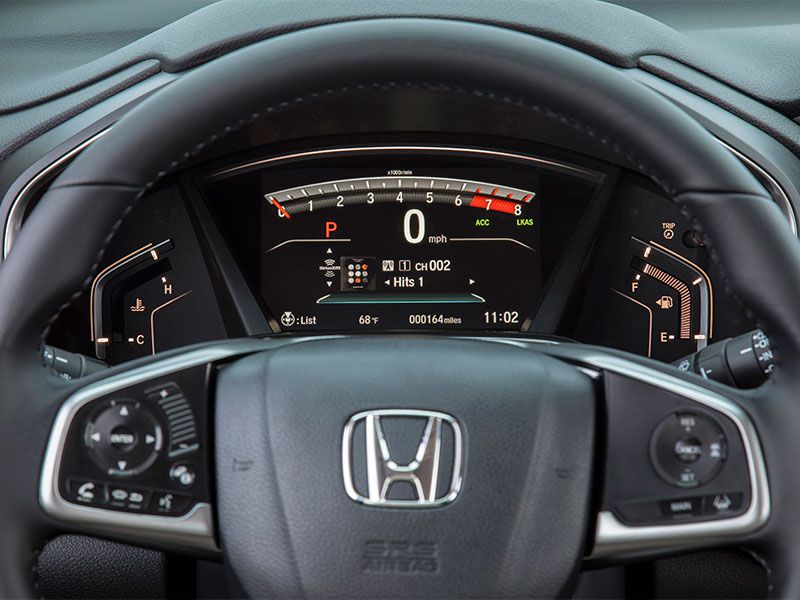
Photo by Honda
Final Thoughts
It’s tough to replace a vehicle that’s as highly regarded and massively successful as the current 2016 CR-V, but Honda has proven to be up the challenge. The new 2017 Honda CR-V is more spacious, efficient, quiet, and refined, and it adroitly blends a plush ride with entertaining driving manners and great everyday practicality. While I will miss the more compact feel and simpler nature of the narrower outgoing model, the new 2017 Honda CR-V is a better vehicle in every way.
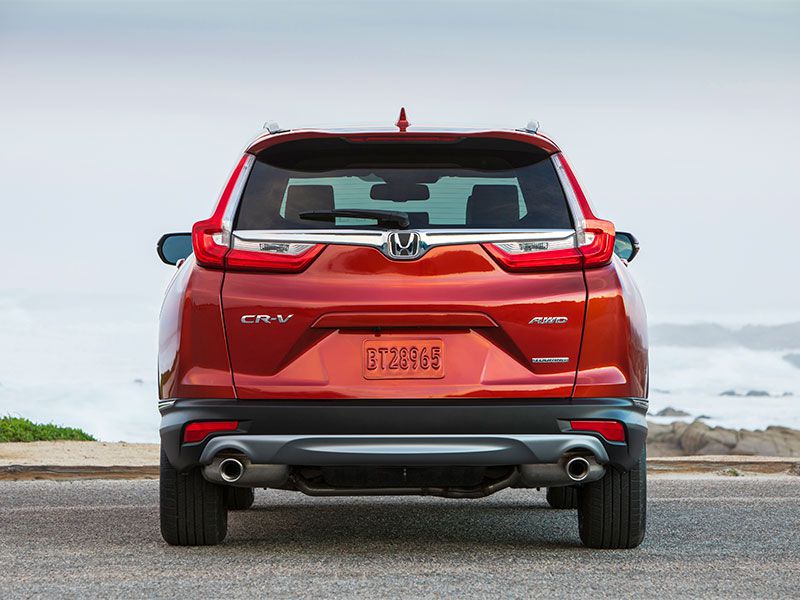
Photo by Honda